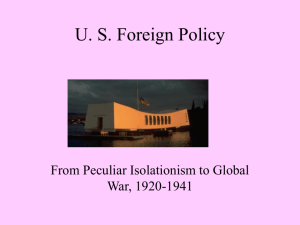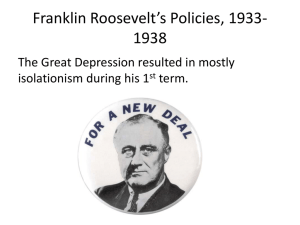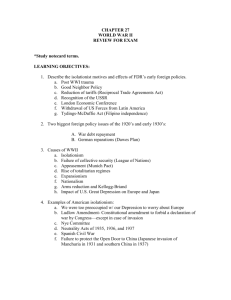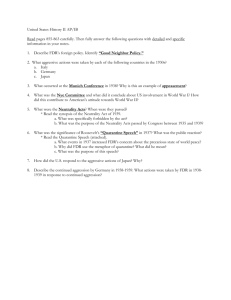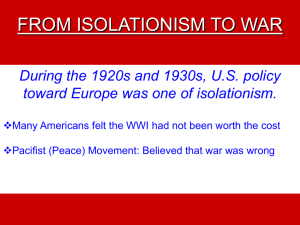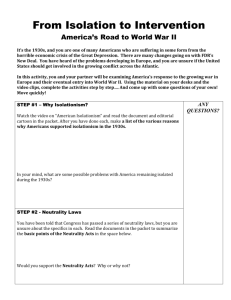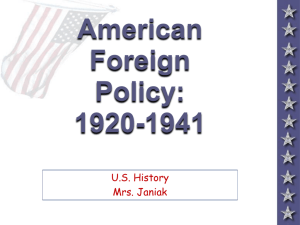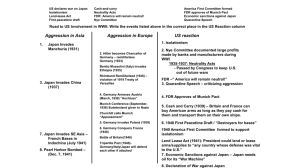Foreign Policy in the Interwar Period (11-12)
advertisement
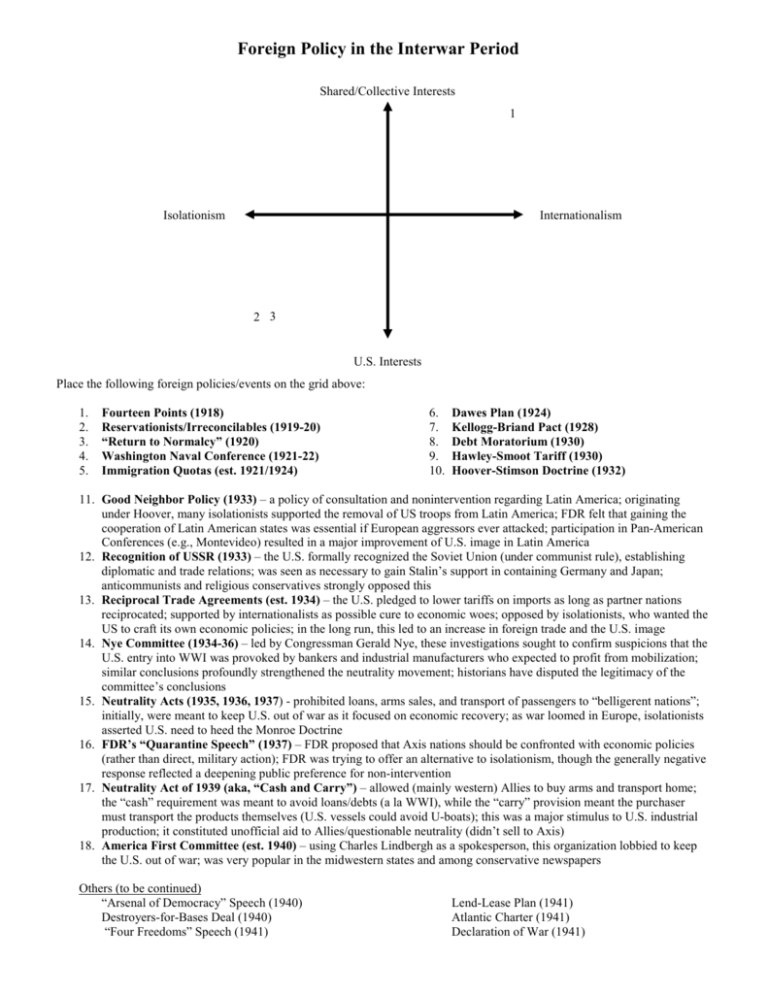
Foreign Policy in the Interwar Period Shared/Collective Interests 1 Isolationism Internationalism 2 3 U.S. Interests Place the following foreign policies/events on the grid above: 1. 2. 3. 4. 5. Fourteen Points (1918) Reservationists/Irreconcilables (1919-20) “Return to Normalcy” (1920) Washington Naval Conference (1921-22) Immigration Quotas (est. 1921/1924) 6. 7. 8. 9. 10. Dawes Plan (1924) Kellogg-Briand Pact (1928) Debt Moratorium (1930) Hawley-Smoot Tariff (1930) Hoover-Stimson Doctrine (1932) 11. Good Neighbor Policy (1933) – a policy of consultation and nonintervention regarding Latin America; originating under Hoover, many isolationists supported the removal of US troops from Latin America; FDR felt that gaining the cooperation of Latin American states was essential if European aggressors ever attacked; participation in Pan-American Conferences (e.g., Montevideo) resulted in a major improvement of U.S. image in Latin America 12. Recognition of USSR (1933) – the U.S. formally recognized the Soviet Union (under communist rule), establishing diplomatic and trade relations; was seen as necessary to gain Stalin’s support in containing Germany and Japan; anticommunists and religious conservatives strongly opposed this 13. Reciprocal Trade Agreements (est. 1934) – the U.S. pledged to lower tariffs on imports as long as partner nations reciprocated; supported by internationalists as possible cure to economic woes; opposed by isolationists, who wanted the US to craft its own economic policies; in the long run, this led to an increase in foreign trade and the U.S. image 14. Nye Committee (1934-36) – led by Congressman Gerald Nye, these investigations sought to confirm suspicions that the U.S. entry into WWI was provoked by bankers and industrial manufacturers who expected to profit from mobilization; similar conclusions profoundly strengthened the neutrality movement; historians have disputed the legitimacy of the committee’s conclusions 15. Neutrality Acts (1935, 1936, 1937) - prohibited loans, arms sales, and transport of passengers to “belligerent nations”; initially, were meant to keep U.S. out of war as it focused on economic recovery; as war loomed in Europe, isolationists asserted U.S. need to heed the Monroe Doctrine 16. FDR’s “Quarantine Speech” (1937) – FDR proposed that Axis nations should be confronted with economic policies (rather than direct, military action); FDR was trying to offer an alternative to isolationism, though the generally negative response reflected a deepening public preference for non-intervention 17. Neutrality Act of 1939 (aka, “Cash and Carry”) – allowed (mainly western) Allies to buy arms and transport home; the “cash” requirement was meant to avoid loans/debts (a la WWI), while the “carry” provision meant the purchaser must transport the products themselves (U.S. vessels could avoid U-boats); this was a major stimulus to U.S. industrial production; it constituted unofficial aid to Allies/questionable neutrality (didn’t sell to Axis) 18. America First Committee (est. 1940) – using Charles Lindbergh as a spokesperson, this organization lobbied to keep the U.S. out of war; was very popular in the midwestern states and among conservative newspapers Others (to be continued) “Arsenal of Democracy” Speech (1940) Destroyers-for-Bases Deal (1940) “Four Freedoms” Speech (1941) Lend-Lease Plan (1941) Atlantic Charter (1941) Declaration of War (1941)


